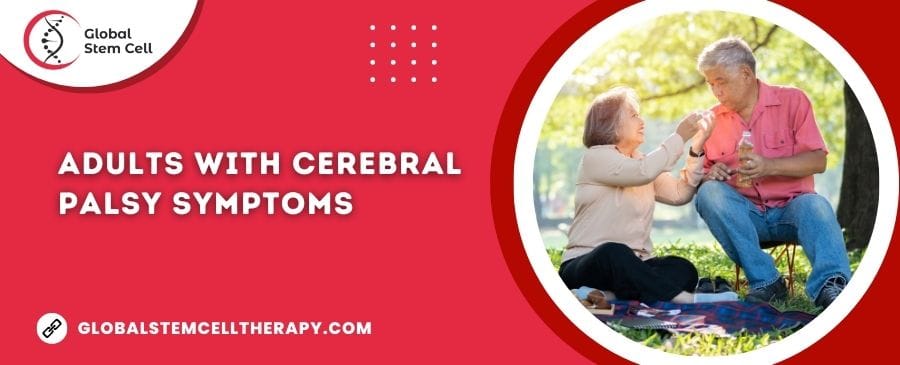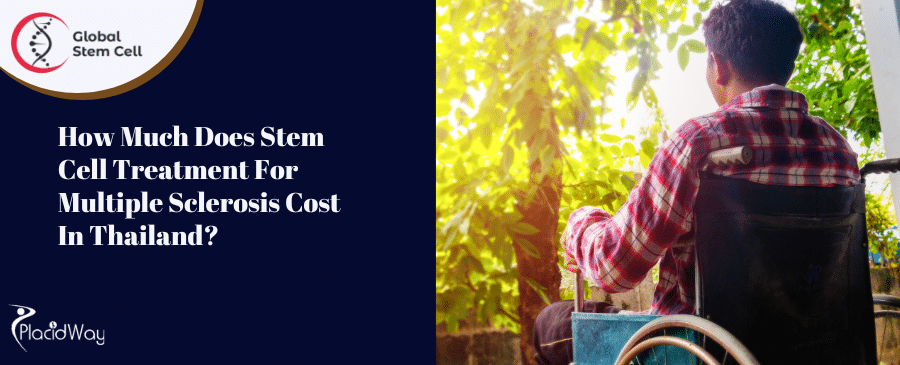Understanding Adults’ Cerebral Palsy Symptoms
Table of Content
Cerebral palsy (CP) is often perceived as a childhood disorder, primarily because its diagnosis usually occurs in infancy or early childhood. However, it is a lifelong condition that continues to impact individuals well into adulthood. It is vital to understand the topic Adults with Cerebral Palsy Symptoms and how to manage them to ensure a high quality of life for those affected by this condition.
Understanding Cerebral Palsy
Cerebral palsy (CP) is a group of disorders that primarily affect muscle coordination and body movement. It’s the most common motor disability in childhood, but its effects extend into adulthood. The condition is caused by damage to or abnormalities in the parts of the brain that control muscle movements.
The term “cerebral palsy” is an umbrella term that encompasses a group of non-progressive, yet often changing, motor impairment syndromes caused by lesions or anomalies in the brain that arise in the early stages of its development.
Cerebral palsy can manifest in different ways, and the severity of symptoms can vary greatly from person to person. Some people with CP may need special equipment to help them with mobility, while others may have mild impairments and require minimal assistance in their daily lives.
There are several types of cerebral palsy, including spastic, dyskinetic (including athetoid, dystonic and choreoathetotic), ataxic, and mixed types. Each of these types is characterized by different kinds of movement patterns.
- Spastic CP is the most common type, characterized by stiffness and difficulty moving due to muscle tightness.
- Dyskinetic CP causes uncontrolled, slow, writhing movements, often affecting the hands, feet, arms, or legs, and in some cases, the muscles of the face and tongue, causing difficulty with swallowing and speech.
- Ataxic CP affects balance and coordination, causing individuals to appear unsteady or shaky.
- Mixed CP is a combination of two or more of the above types.
While the brain damage that leads to cerebral palsy doesn’t change over time, the symptoms can evolve as the individual grows and develops. Therefore, understanding and managing CP requires a long-term approach that adapts to an individual’s changing needs over their lifetime. Despite the challenges it presents, many individuals with cerebral palsy lead successful, fulfilling lives with the right support and resources.
Symptoms of Cerebral Palsy in Adults
As individuals with cerebral palsy age into adulthood, their symptoms might evolve or change. The symptoms experienced in adulthood often reflect those seen in childhood, but they may present new challenges or complications. Here are some common symptoms experienced by adults with cerebral palsy:
Muscle Spasticity and Rigidity: Adults with cerebral palsy often experience increased muscle tone, leading to muscle stiffness known as spasticity or rigidity. This can make movement difficult and sometimes painful.
- Pain: Chronic pain is a common symptom among adults with cerebral palsy. This can result from the stress and strain on the body caused by muscle imbalances, abnormal movement patterns, and joint issues.
- Mobility Issues: Over time, the physical strain of living with cerebral palsy can lead to increased difficulty with mobility. This can range from trouble walking to needing assistive devices like wheelchairs or walkers.
- Fatigue: Many adults with cerebral palsy report increased fatigue. This can be due to the extra effort required to move and control their bodies, but it may also result from other factors like poor sleep or other health issues.
- Aging-Related Health Issues: Adults with cerebral palsy may also face common age-related health issues earlier than their peers without cerebral palsy. These can include arthritis, osteoporosis, heart and lung issues, and more.
- Mental Health Issues: Adults with cerebral palsy also have a higher risk for mental health issues, such as depression and anxiety. This can be due to the physical challenges and social isolation they may experience.
- Difficulty with Speech and Swallowing: Some adults with cerebral palsy may continue to have difficulty with speech and swallowing, a symptom that often begins in childhood. This can affect their ability to communicate effectively and eat comfortably.
- Cognitive Issues: While not all people with cerebral palsy have intellectual disabilities, some may experience cognitive issues. This can include difficulty with memory, concentration, and problem-solving.
Remember that every individual with cerebral palsy is unique, and not everyone will experience all of these symptoms. The severity and combination of symptoms can vary widely from person to person.
The Effects of Aging on Adults with Cerebral Palsy
Cerebral palsy (CP) is a condition that presents unique challenges as individuals age. While CP itself is a non-progressive condition, meaning the original brain damage does not worsen, the symptoms and secondary conditions can evolve and become more complex over time. This process can lead to what is sometimes referred to as ‘premature aging.’ Here are some of the effects of aging on adults with cerebral palsy:
- Increased Physical Degeneration: Due to the extra strain placed on the body by cerebral palsy, adults with CP may experience physical degeneration earlier than their peers. This can include a decline in mobility, increased fatigue, and more difficulty with tasks requiring coordination and fine motor control.
- Premature Joint Wear and Musculoskeletal Issues: The abnormal muscle tone and movement patterns associated with cerebral palsy can lead to premature wear and tear on the joints. This can result in early-onset arthritis, increased risk of fractures, and other musculoskeletal issues.
- Increased Pain: As adults with cerebral palsy age, they may experience increased pain. This can be due to a combination of factors, including joint issues, muscle stiffness and spasticity, and other health issues related to aging.
- Mental Health Concerns: Adults with CP may face increased mental health concerns as they age. The physical challenges, coupled with social isolation and potential difficulties with employment and independence, can lead to higher rates of depression and anxiety.
- Early Onset of Age-Related Health Conditions: Adults with CP may face common age-related health issues earlier than their peers without CP. These can include cardiovascular disease, lung conditions, osteoporosis, and others.
- Cognitive Decline: While not all individuals with cerebral palsy experience cognitive impairment, those who do may see a decline in their cognitive abilities as they age, similar to the general population.
Managing these effects often requires a multidisciplinary approach, involving various healthcare professionals, and a focus on preventative care and maintaining overall health. Support from community resources, family, and peers can also play a crucial role in managing the effects of aging with cerebral palsy.
Treatment and Management of Cerebral Palsy in Adults
The management of cerebral palsy in adults typically involves a combination of medical treatments, physical and occupational therapies, and lifestyle modifications. While there’s no cure for cerebral palsy, these strategies can help manage symptoms, improve quality of life, and promote independence. Here are some common approaches to treating and managing cerebral palsy in adults:
- Physical Therapy: Regular physical therapy can help manage muscle spasticity, improve mobility, and strengthen muscles. It can also help reduce pain and prevent joint issues.
- Occupational Therapy: Occupational therapy can help adults with CP develop skills needed for daily living and independence, such as cooking, dressing, and using a computer.
- Speech and Language Therapy: For those with speech or swallowing difficulties, speech and language therapy can help improve communication skills and make eating and drinking safer and more comfortable.
- Medical Treatments: Various medications can be used to manage symptoms of CP in adults, such as muscle relaxants for spasticity, pain relievers for chronic pain, and medications for associated conditions like epilepsy.
- Surgical Interventions: In some cases, surgery may be recommended to alleviate severe spasticity, correct deformities, or improve mobility. This can include orthopedic surgery, selective dorsal rhizotomy, or the implantation of a baclofen pump.
- Assistive Devices: Many adults with CP use assistive devices to enhance mobility and independence. These can include wheelchairs, walkers, orthotic devices, adaptive utensils, and communication devices.
- Healthy Lifestyle: Maintaining a healthy lifestyle is crucial for managing CP in adulthood. This includes a balanced diet, regular physical activity, adequate sleep, and regular check-ups with healthcare providers.
- Mental Health Support: Given the higher risk of mental health issues, psychological support is a crucial part of managing CP in adults. This can involve counseling or psychotherapy, support groups, and in some cases, medication.
- Support Services: Various support services can help adults with CP navigate life, such as vocational rehabilitation, social services, and disability services.
Managing cerebral palsy in adulthood is a lifelong commitment that requires a comprehensive and multidisciplinary approach. With appropriate support and resources, adults with CP can manage their symptoms and lead fulfilling lives.
Coping with Cerebral Palsy as an Adult
Coping with cerebral palsy as an adult involves a combination of medical treatment, self-care, and psychological strategies. Here are some tips for adults with cerebral palsy seeking to manage their symptoms and enhance their quality of life:
- Stay Active: Physical activity is crucial for maintaining strength and flexibility. Work with a physical therapist to develop a safe and effective exercise routine tailored to your abilities and needs.
- Follow a Balanced Diet: Good nutrition supports overall health, energy levels, and weight management, which can help reduce strain on your joints and muscles.
- Use Assistive Devices: Assistive devices like wheelchairs, braces, or speech-generating devices can facilitate mobility, communication, and independence. Occupational therapists can help you find the right tools and teach you how to use them effectively.
- Seek Emotional Support: Coping with a chronic condition like cerebral palsy can be emotionally challenging. Seek support from friends, family, or mental health professionals. Joining a support group can also provide a sense of community and shared understanding.
- Practice Stress Management: Techniques like mindfulness, meditation, and deep breathing can help manage stress and promote relaxation. Finding hobbies and activities you enjoy can also serve as a positive outlet for stress.
- Maintain Regular Medical Care: Regular check-ups with your healthcare team are crucial for managing your condition and addressing any new symptoms or concerns that arise.
- Advocate for Yourself: Speak up for your needs, whether it’s requesting accommodations at work, ensuring accessibility in public spaces, or communicating your needs to healthcare providers.
- Educate Yourself and Others: Understanding your condition can help you make informed decisions about your care. It can also enable you to educate others about cerebral palsy, fostering understanding and empathy in your community.
Remember, there’s no “right” way to cope with cerebral palsy, and what works best will depend on your individual circumstances, abilities, and needs. It’s okay to ask for help, and to seek support from professionals and loved ones as you navigate life with cerebral palsy.
Final Advice
Cerebral palsy is a lifelong condition, and adults living with CP may face unique challenges as they age. Understanding the symptoms of cerebral palsy in adults, and how to manage these symptoms, is vital to ensuring those with CP can lead fulfilling lives. Although living with CP can be difficult, remember that with the right support and resources, adults with CP can successfully navigate these challenges and live a fulfilling, rewarding life.
In closing, let’s adopt a more inclusive perspective, acknowledging and addressing the specific needs and experiences of adults with cerebral palsy. After all, cerebral palsy doesn’t stop in childhood – neither should our understanding and support for those living with it.







